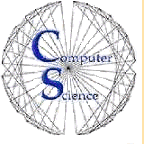
Department of Computer Science
San Jose State University
Special Talk: Lightweight
Information Integration via Mashups
By Volker Markl, IBM
When: Wednesday, February 7, 2007
Where: MacQuarrie Hall, Room 225, SJSU
Time: 3 p.m.
Abstract:
A mashup is a web application that combines content from two or
more web services and creates a new service. They are revolutionizing
web development by allowing those without extensive programming
experience to quickly combine existing services in innovative
ways. Simple and lightweight Web 2.0 technologies such as
RSS/ATOM feeds and AJAX are at the heart of the mashup revolution.
Situational applications are enterprise web applications built
on-the-fly to solve a specific business problem. They are developed
without involvement of the IT department and exist outside its control.
They
might combine data from a variety of enterprise sources such as SAP or
Office applications, back-end databases, and content management
systems. In effect, situational applications are enterprise mashups.
Any distinction between mashups and situational applications will
become progressively blurred as situational applications augment
enterprise data with data outside the firewall.
Enterprise mashups are information heavy, as they access, filter, join,
and aggregate data from multiple sources; however, these data
machinations are done in the application mixed with business and
presentation logic. The Mashup Fabric In Almaden (MAFIA) project is
exploring simple, lightweight (in keeping with the spirit of Web 2.0)
technologies that might liberate enterprise mashup developers from the
details of how data is accessed and combined, much as database
applications where freed from these concerns decades ago. MAFIA is
developed in PHP using AJAX and further Web 2.0 concepts.
We are calling the set of technologies that would support the data
processing needs of enterprise mashups a "mashup fabric". The mashup
fabric will provide (1) an "ingestion layer" for receiving web feeds,
accessing web services, screen scraping, and other inflow operations,
(2) an "augmentation layer" for filtering and combing that data, and
(3) a "presentation layer" that would support access to the augmented
data via feeds, webservices, and other formats. Support for
"standardization" is one of the key aspects of a mashup fabric.
Standardization allows data from different sources to be combined in
meaningful ways by providing services for mapping famous concepts such
as "place", "person", "product, "time" to a canonical representation.
This talk will give an overview of the activities that we plan to
investigate in the MAFIA, raise some important research challenges, and
discuss possibilities for an intern to contribute to the project.
 Volker
Markl is a Research Staff Member of the Advanced Optimization
and Self-Managing Databases group. His research interests include:
Volker
Markl is a Research Staff Member of the Advanced Optimization
and Self-Managing Databases group. His research interests include:
- Autonomic computing
- New algorithms for query processing and
optimization
- New search and query paradigms
- Multi-Dimensional data management issues
- Distributed and pervasive support
- E-Commerce applications and performance issues

 Volker
Markl is a Research Staff Member of the Advanced Optimization
and Self-Managing Databases group. His research interests include:
Volker
Markl is a Research Staff Member of the Advanced Optimization
and Self-Managing Databases group. His research interests include: